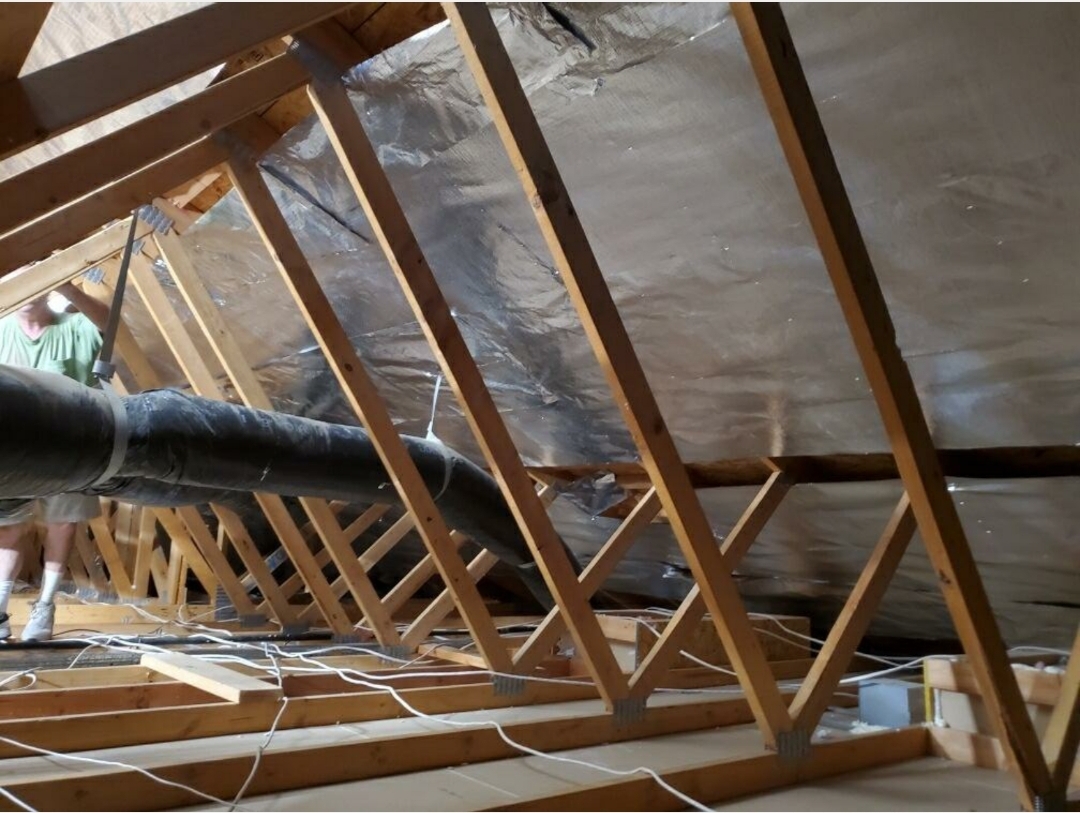

This does not mean a radiant barrier will reduce the homes’ energy use by 40%, as many advertisers claim. A radiant barrier system can reduce the heat flow into the house from the attic by approximately 40%. Two things affect the performance of a radiant barrier system: the level of insulation in the attic and the geographic location of the home. Third, its vapor permeability is very low. Second, it emits (gives off) very little heat. First, it reflects thermal (long-wave infrared) radiation very well. Figure 1. There are three potential locations for an attic radiant barrier – adhered to the underside of the roof decking, hanging from the rafters, or on the ceiling insulation (Source: Radiant Barriers: A Question and Answer Primer 2005).Īluminum foil, the operative material in attic radiant barriers, has three physical properties of interest. Other types of radiant barriers such as “chips”, foil faced air bubble-packing, and multi-layer products, are acceptable for location 3 (more below). Only locations 1 and 2 are recommended for sheet radiant barriers because dust will accumulate on the radiant barrier if it is installed at location 3. Figure 1 illustrates the locations in which a radiant barrier may be installed in an attic. Radiant barriers may help the home qualify for Energy Star seal and insulate energy efficiency improvement.A radiant barrier is typically a layer of reflective aluminum foil material placed in the attic next to an air space to block radiant heat transfer between a heat-radiating surface (such as the underside of the roof deck) and a heat-absorbing surface (such as insulation at the attic floor). Because heat always moves from hot areas to cold areas, radiant barrier sheathing also prevents heat transfer from the warm interior during the cooler winter months. Radiant barrier roof sheathing helps to improve comfort in the building interior during the warm summer months and reduces energy costs. In warmer climates your may be able to reduce A/C requirements by up to ½ ton. The reduced attic temperature increases the efficiency of attic ductwork which prolongs the life of your heating and cooling systems because there are fewer cycle times. Radiant barriers are the most effective in warmer climates, because the hotter it gets the better radiant barriers work. When utilizing oriented strand board (OSB) radiant barrier sheathing, you can reflect up to 97% of solar radiation which translates into an attic heat reduction of up to 30☏.Ī cooler attic space means less heat moving to the cooler space below the attic. A radiant barrier must have an emissivity of 0.1 or less to be effective. Other kinds of radiant barriers combine reflective materials (usually aluminum foil) with materials like plastic films, cardboard and craft paper. The most effective radiant barrier sheathing is a structural roof sheathing panel which consists of an oriented strand board (OSB) with heat-reflecting foil laminated to one side. The hotter the attic, the more the heat moves down to the cooler building below.


While heat is radiated and conducted in all directions it always moves from hot areas to cold areas. Convection is when heat is transferred through the air inside the attic and heats the insulation and conduction occurs when heat moves through the insulation to the building below. Infra-red radiation is augmented by convection and conduction. Radiation from the sun is the primary source of heat affecting your attic temperature. A radiant barrier can lower that heat transfer, keep the attic space cooler and lower cooling costs by up to 17% in warmer climates. The temperature of the attic space increases and that heat is transferred to the building below increasing summer energy consumption and cooling costs. Attics heat up when the sun’s radiant energy heats the shingles and the heat is transferred to the interior attic space through the roofing materials via conduction. Radiant barriers are utilized to reduce summer heat gain in attics.


 0 kommentar(er)
0 kommentar(er)
